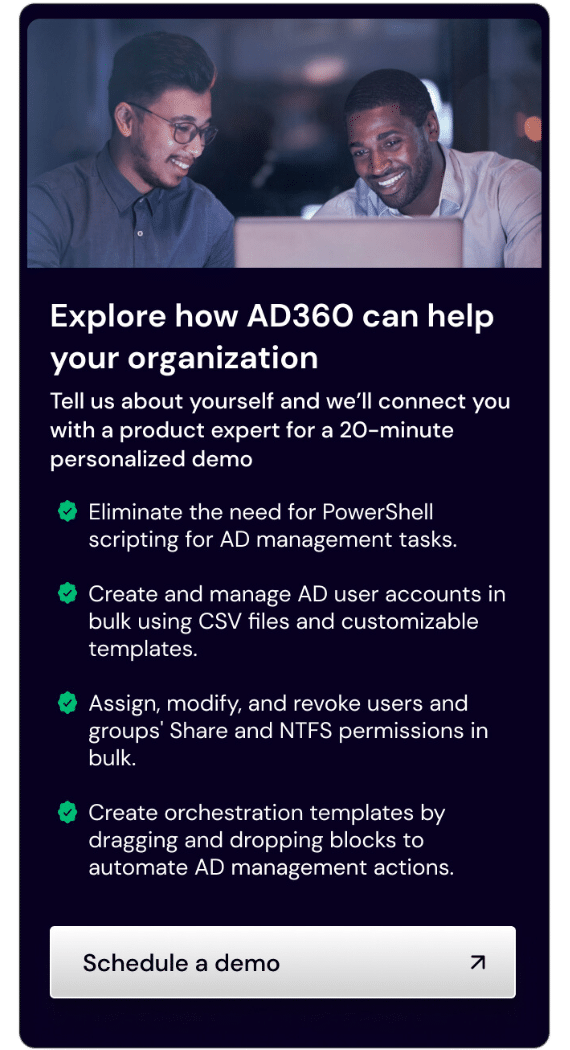
In August 2025, Microsoft warned that Storm-0501, a financially motivated ransomware group, is abusing Microsoft Entra ID and hybrid Active Directory synchronization accounts to seize control of entire cloud environments. Victims reported that attackers exfiltrated Azure data, deleted backups, and issued ransom demands over Microsoft Teams. For IT admins and security engineers, this marks a turning point: ransomware is no longer just a file-encrypting malware on endpoints. It has evolved into a cloud-native identity attack, where the weakest service account can expose an entire enterprise.
Why this matters for Active Directory & Entra ID users
Hybrid identity is the backbone of most enterprises. Many organizations connect on-prem Active Directory (AD) with Entra ID (formerly Azure AD) through Entra Connect. This sync layer is designed for convenience, but it also introduces privileged service accounts that attackers target.
On our site, review the basics in Active Directory Security Fundamentals and Entra ID vs Active Directory: Key Differences. Storm-0501 shows that these fundamentals are no longer “nice to have” — they’re survival requirements.
How the attack works (step-by-step)
Compromise of sync sccounts
Entra Connect creates service accounts with high privileges. Many lack MFA and have static passwords. Once breached, they act as a backdoor into Entra ID.
Elevation to global admin
Attackers reset or register MFA on these accounts and escalate to Global Administrator roles.
Cloud-Native “Ransomware”
Using tools like AzCopy and Azure CLI, attackers exfiltrate storage accounts and then delete VMs, backups, and snapshots.
Extortion via Teams
Ransom notes arrive in Microsoft Teams, leveraging the victim’s trusted collaboration platform for pressure.
Why This Attack Works
- Identity = Perimeter. Cloud systems assume admin accounts are trustworthy. Hijack identity, inherit power.
- APIs Replace Malware. Destruction and exfiltration happen via legitimate administrative operations.
- Hybrid = Choke Point. Sync accounts bridge AD and Entra ID; compromise the bridge to cross both worlds.
Fundamentally, security is only as strong as the least protected identity with maximal scope. In hybrid setups, these are often service accounts.
What This Means for AD / Entra Admins
Backup Strategy Rethink
Traditional backups inside Azure aren’t enough. Adopt immutable backups stored outside Entra ID’s blast radius. See Ransomware Recovery Strategies.
Service Account Hardening
- Audit Entra Connect service accounts and reduce scope to least privilege.
- Rotate passwords frequently; avoid static credentials.
- Use Privileged Identity Management (PIM) and just-in-time access for admin roles.
Conditional Access & MFA
- Enforce conditional access for all non-human accounts. Where MFA isn’t possible, add strong compensating controls.
- Limit from where (and how) service identities can authenticate.
Monitoring & Detection
- Watch for bulk operations (e.g., mass deletions, unusual AzCopy usage, snapshot removal).
- Forward logs to your SIEM; alert on risky role assignments and token anomalies.
Admin Checklist (At-a-Glance)
| Risk Area | Exploit | Mitigation |
|---|---|---|
| Entra Connect Accounts | Compromised, MFA bypassed | Audit privileges, enforce rotation, conditional access policies |
| Global Admin Escalation | Role abuse | PIM, just-in-time admin assignment, role review |
| Backup Deletion | Azure snapshots destroyed | Immutable/off-cloud backup strategy |
| Teams Ransom Note | Social engineering via chat | User training, restrict external Teams messages (Teams Security Best Practices) |
Common Misunderstandings
- “We use MFA, so we’re safe.” Service accounts often don’t use MFA; attackers know this.
- “Ransomware = Encryption.” Not anymore. This is destruction using native tools.
- “Our backups are in Azure.” If backups share the same identity plane, attackers can wipe them too.
Expert Frameworks (Mental Models)
- Identity as Infrastructure — Treat accounts like hardware: harden, monitor, isolate.
- Assume Sync Breach — Design as if Entra Connect could be compromised; build fallback processes.
- Blast Radius Minimization — Ensure no single identity compromise can cause catastrophic loss.
Key Takeaways
- Storm-0501 weaponizes Entra ID by hijacking service accounts.
- The attack is cloud-native: APIs and admin tools replace endpoint malware.
- Hybrid identity is the weak link — sync accounts become attack paths.
- Recovery requires immutable, off-plane backups and identity hardening.
- Treat identity as the new attack surface.
FAQ / Quick Facts
What is Storm-0501?
A financially motivated group targeting hybrid cloud environments using Entra ID.
How do they exploit Entra ID?
They compromise Entra Connect sync accounts, escalate to Global Admin, and delete/exfiltrate Azure data.
What makes this different from traditional ransomware?
Instead of encrypting files, they use legitimate cloud tools to destroy or steal data.
Why is this happening now?
The hybrid shift created identity choke points that are easier to exploit than endpoints.
How can organizations protect themselves?
Audit service accounts, enforce conditional access, implement immutable off-plane backups, and monitor API activity.
Is on-prem AD affected?
Indirectly. Compromise of sync accounts grants leverage over cloud resources tied to AD identities.
Sources & Further Reading
Closing
Storm-0501’s campaign demonstrates that identity governance is the new frontline of ransomware defense.
For hybrid AD environments, the lesson is clear: your weakest service account can take down your strongest infrastructure.
Reassess backups, privileges, and monitoring now — as if attackers already have Global Admin keys.


